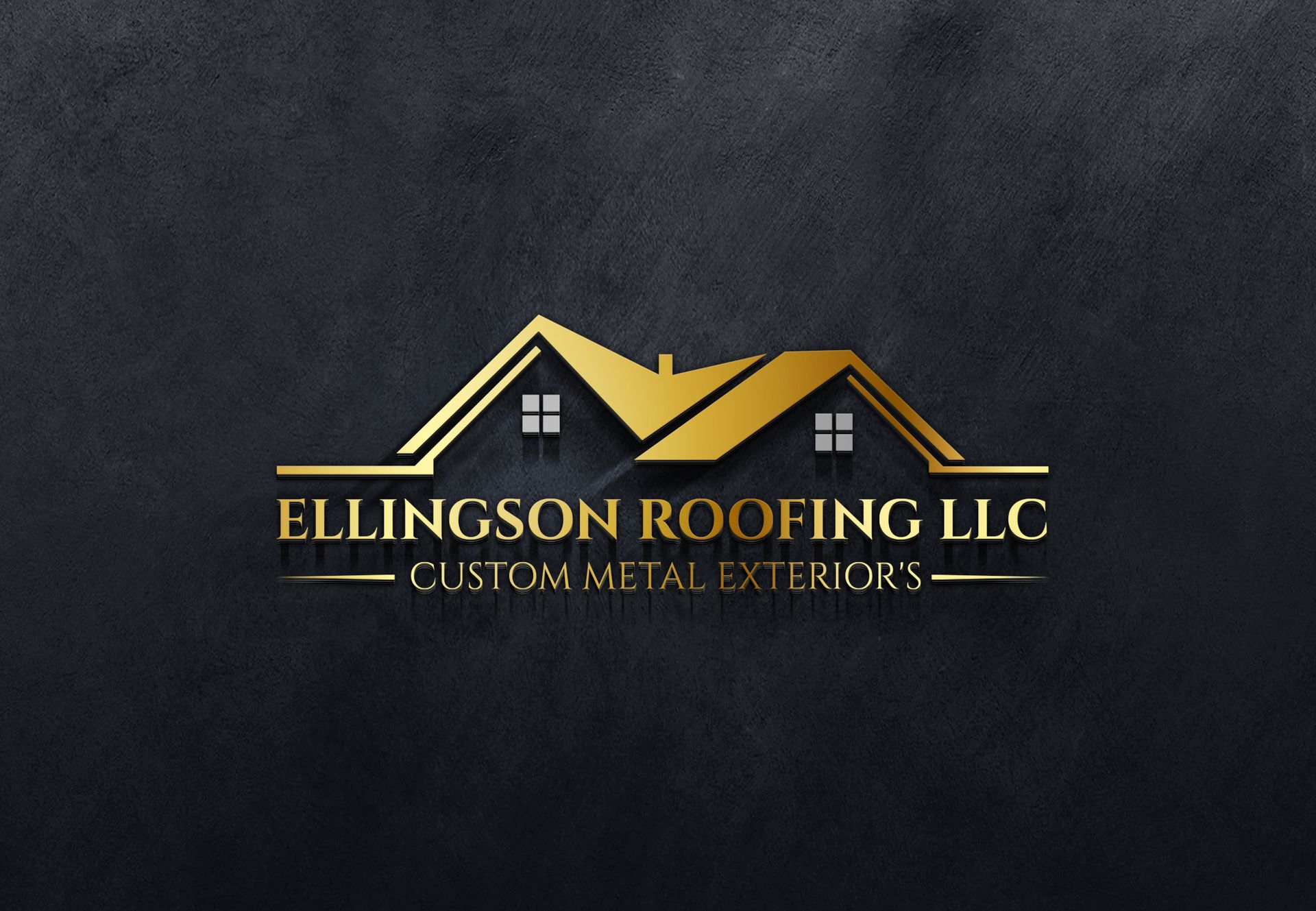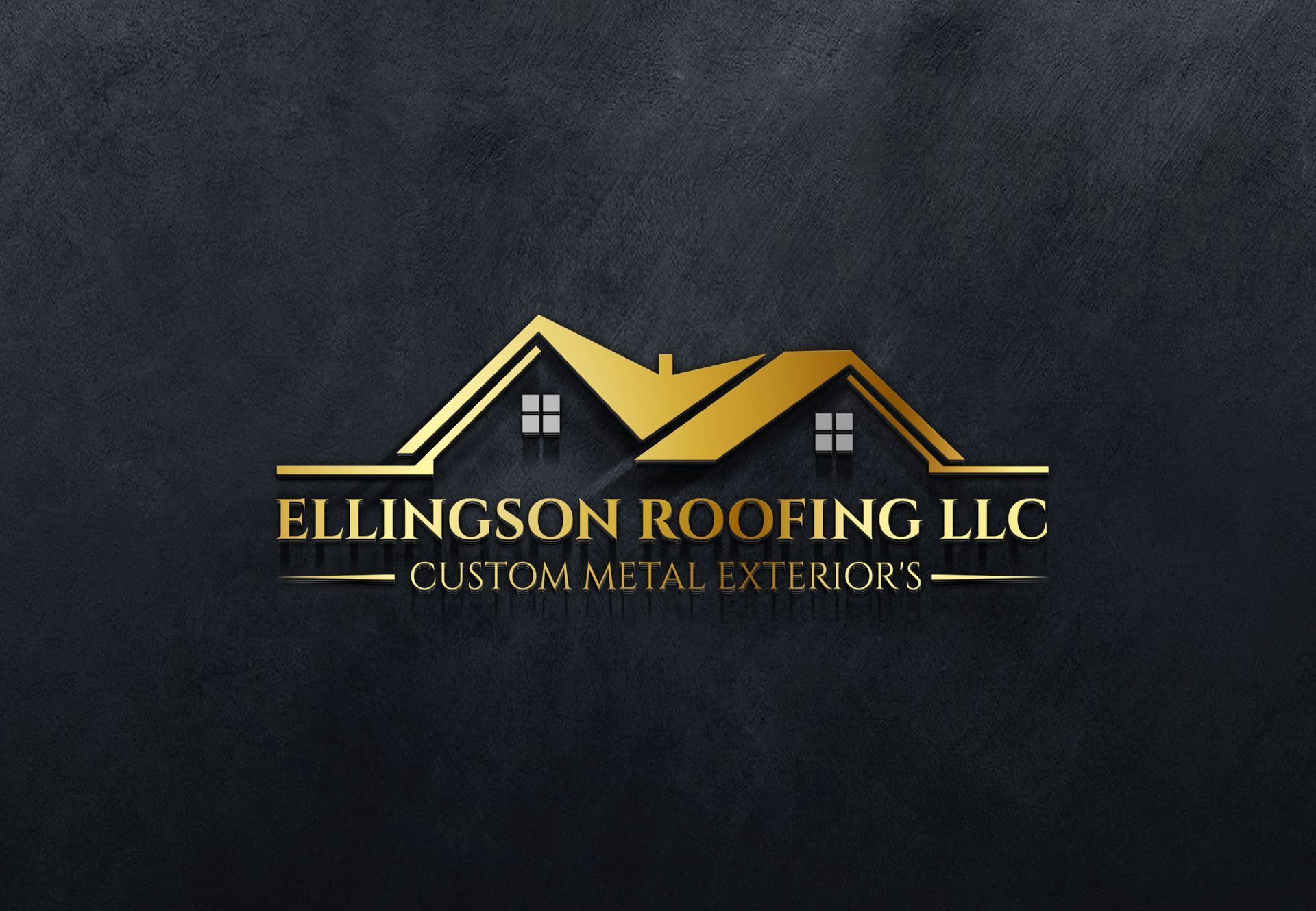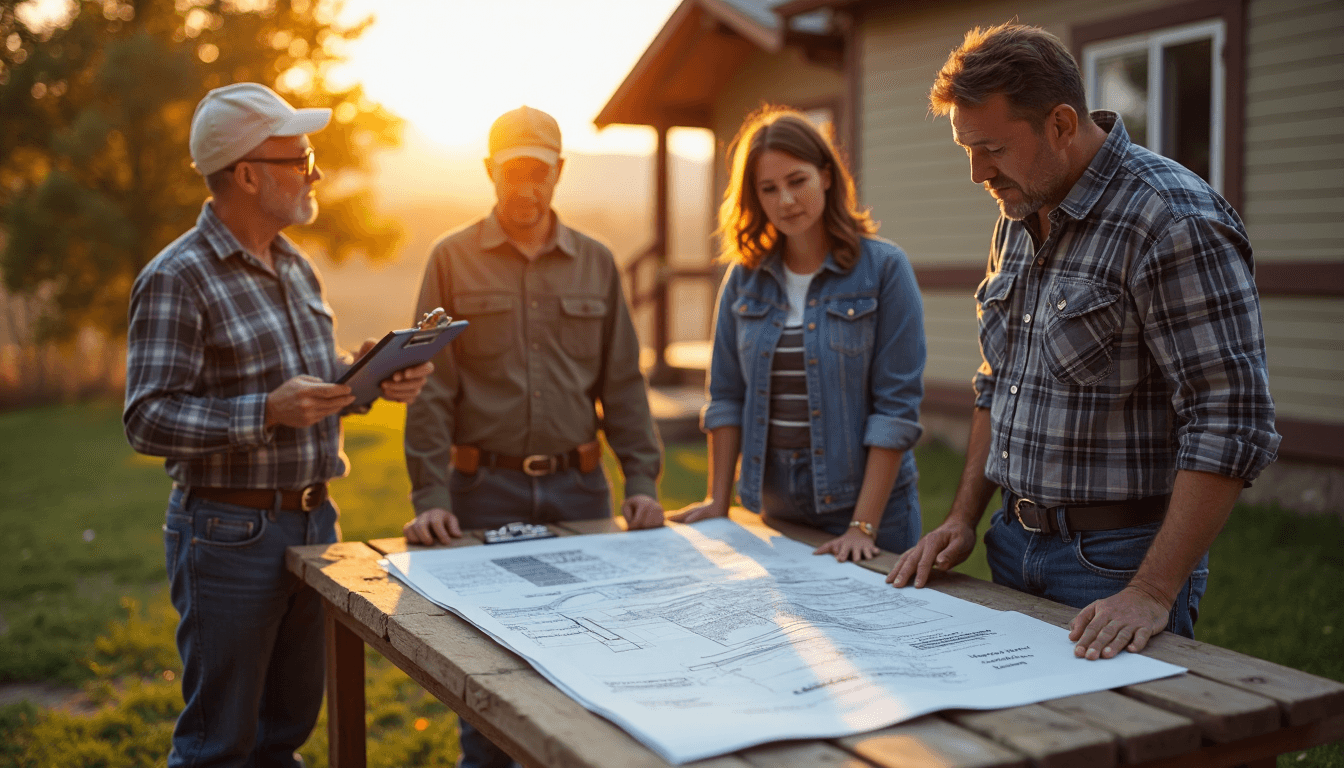DIY Roof Inspection Tips for Montana: 2025 Guide for Homeowners & Property Managers
Contact Us
DIY Roof Inspection Tips for Montana: 2025 Guide for Homeowners & Property Managers
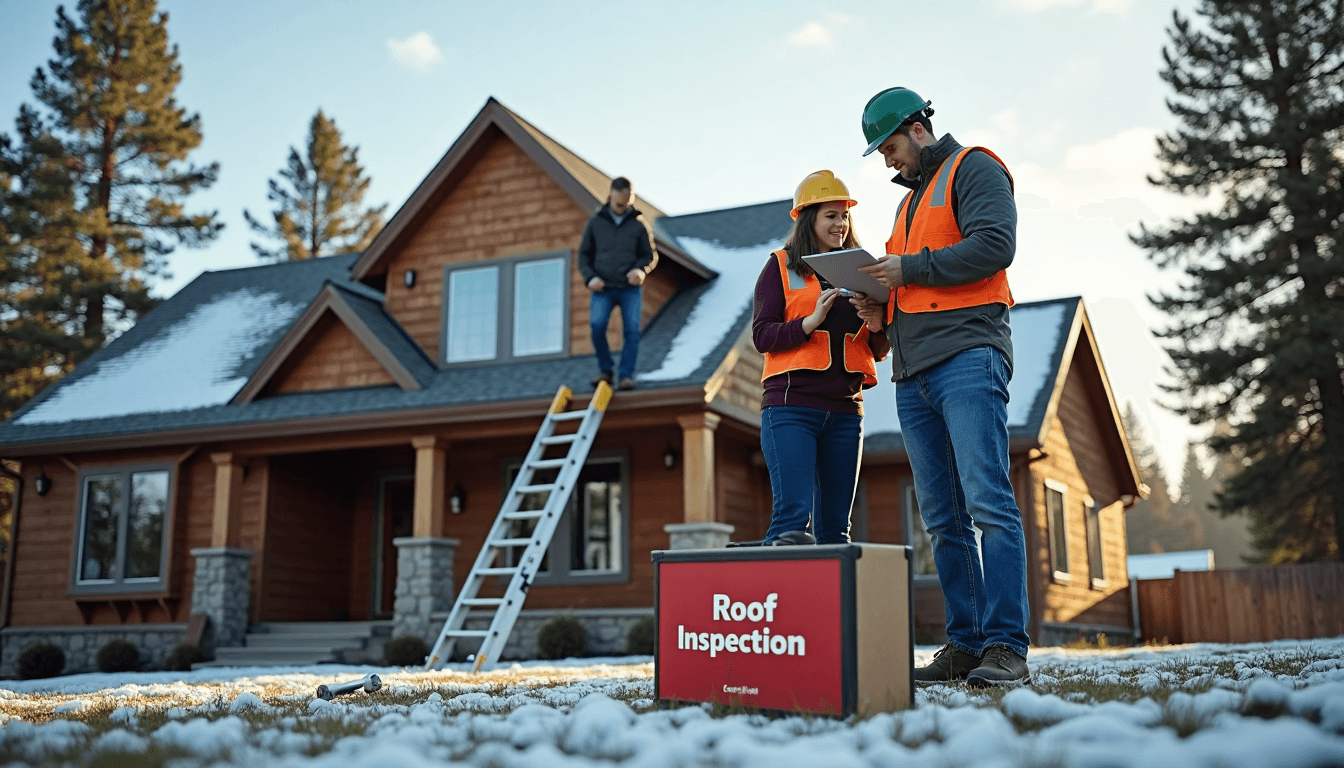
Montana roofs take a beating from all sides. Homeowners face winters so harsh that state building codes demand roofs handle at least 30 pounds of snow per square foot , but summer brings blazing heat and wild windstorms, too. Most folks assume spotting a problem means waiting until water pours through the ceiling or shingles start blowing away. Think again. The real secret is that the subtle warning signs show up long before disaster hits. Catch these signs early and you could save thousands in repairs.
Table of Contents
Quick Summary
| Takeaway | Explanation |
|---|---|
| Montana’s Weather Challenges | Homeowners must be aware of the unique impacts of Montana’s extreme winter snow, summer heat, and wind on roofing systems, emphasizing regular assessments to mitigate damage. |
| Safety First for Inspections | When conducting DIY roof inspections, prioritize safety with proper equipment, including a sturdy ladder, non-slip shoes, and safety harnesses, while documenting findings thoroughly. |
| Recognize Warning Signs Early | Look for early indicators of roof damage, such as curling shingles, water stains indoors, and unexplained odors, to prompt timely professional evaluation and prevent costly repairs. |
| Professional Intervention is Key | Homeowners should engage a roofing professional for critical damage scenarios, complex repairs, and when significant weather impacts are observed to ensure proper assessment and long-term solutions. |
| Invest in Roof Maintenance | Proactive maintenance and choosing energy-efficient materials can save money in the long run by preventing major issues that arise from Montana’s climate challenges. |
How Montana Weather Affects Your Roof
Montana’s extreme weather presents unique challenges for homeowners seeking to maintain their roof’s structural integrity. The state’s diverse climate ranges from bitterly cold winters with heavy snowfall to intense summer thunderstorms, creating a perfect storm of potential roof damage risks.
Snow and Ice: The Winter Roofing Challenge
Montana’s winter conditions pose significant threats to residential roofing systems. According to the Montana Department of Labor and Industry , the state mandates a minimum design roof snow load of 30 pounds per square foot, reflecting the substantial weight roofs must withstand. Ice dams represent a particularly insidious winter problem. When heat from a home’s interior causes snow to melt and refreeze at the roof’s edges, water can back up under shingles, potentially causing extensive interior damage.
Homeowners must be vigilant about snow accumulation and potential ice dam formation. Proper attic insulation and ventilation are critical in preventing these issues. Uneven roof surface temperatures can create conditions where snow melts inconsistently, increasing the risk of water infiltration and structural compromise.
Extreme Wind and Storm Damage
Montana’s weather isn’t just about snow. The state experiences significant wind events that can devastate roofing structures. A notable example occurred in 2010 when an EF2 tornado in Billings dramatically demonstrated the potential for wind-related roof damage, including the complete removal of the MetraPark arena’s roof.
Wind can cause multiple types of roof damage, including:
- Lifted or torn shingles : High winds can pull roofing materials away from their secure position
- Debris impact : Branches and other objects become projectiles during severe storms
- Structural stress : Repeated wind exposure weakens roofing materials over time
Summer Heat and UV Exposure
While winter presents its challenges, Montana’s summers bring their own set of roofing concerns. Intense sunlight and high temperatures can cause significant material degradation. Asphalt shingles can become brittle and crack, while metal roofing may expand and contract, potentially compromising seal integrity.
Local meteorological data suggests that summer temperatures in Montana can regularly exceed 90 degrees Fahrenheit, creating substantial thermal stress on roofing materials. UV radiation accelerates material breakdown, causing:
- Color fading
- Material brittleness
- Reduced overall roof lifespan
Proactive homeowners should consider roof coatings or materials specifically designed to withstand Montana’s challenging climate. Regular inspections become crucial in identifying and addressing weather-related wear before it leads to more significant damage.
Understanding these weather-related challenges is the first step in developing an effective roof maintenance strategy. By recognizing the specific risks posed by Montana’s diverse climate, homeowners can take targeted actions to protect their most valuable asset.
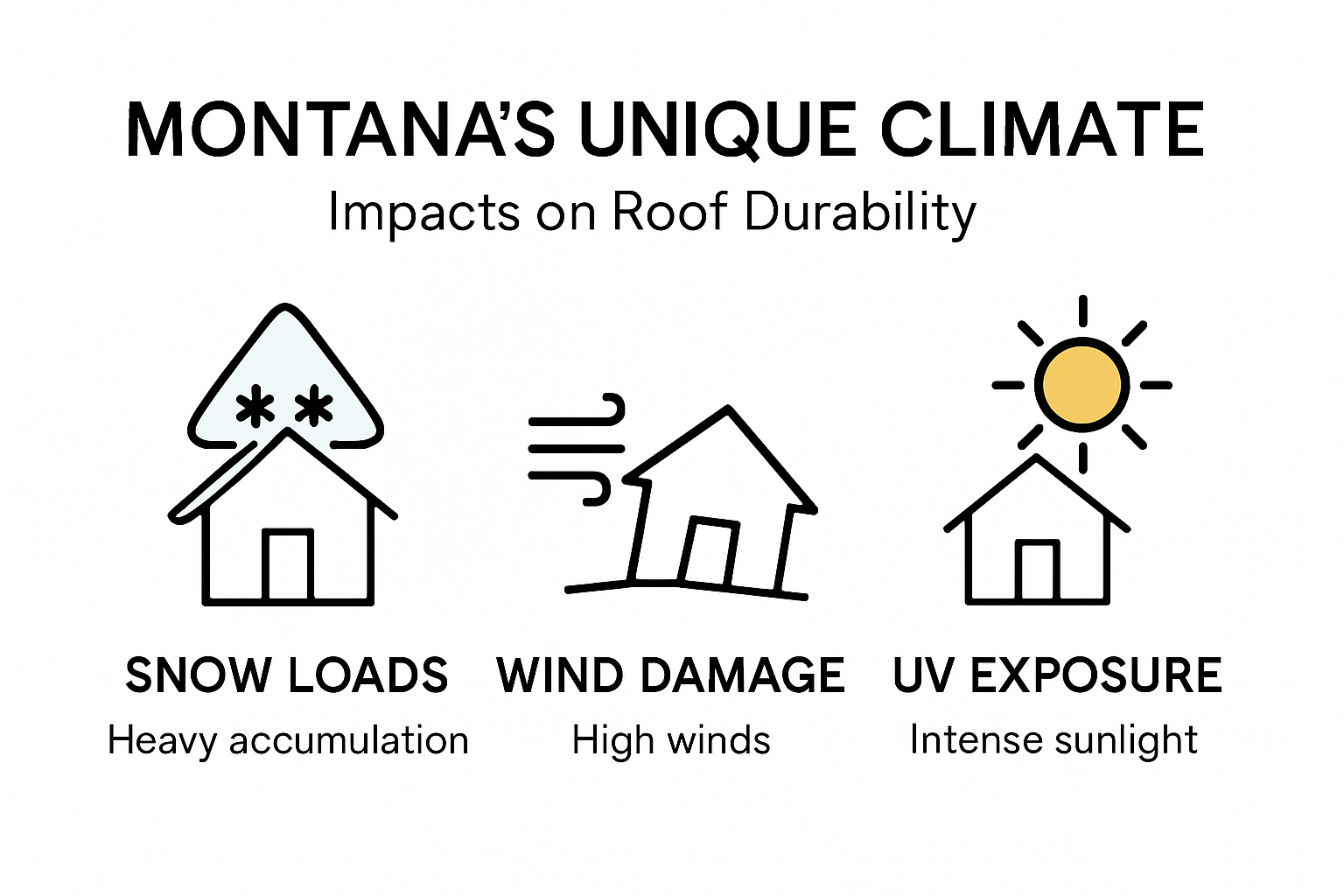
Step-by-Step DIY Roof Inspection Checklist
Conducting a comprehensive DIY roof inspection requires careful planning, safety precautions, and a systematic approach. The International Association of Certified Home Inspectors recommends a thorough evaluation to catch potential issues before they escalate into costly repairs.
Safety First: Preparation and Equipment
Before beginning your roof inspection, prioritize personal safety. You will need specific equipment to conduct a proper assessment:
- Sturdy ladder : Ensure it’s tall enough to reach your roof safely
- Non-slip shoes : Provides traction on potentially slippery surfaces
- Safety harness : Critical for preventing falls, especially on steeper roofs
- Binoculars : Allows initial inspection from ground level
- Notebook and camera : Document any findings for future reference
The General Services Administration recommends conducting inspections twice annually - ideally before and after Montana’s harsh winter season.
Below is a concise table summarizing essential safety equipment and its purpose to help you prepare for a safe DIY roof inspection.
| Equipment | Purpose |
|---|---|
| Sturdy ladder | Safe access to roof |
| Non-slip shoes | Prevent slipping on sloped/slick surfaces |
| Safety harness | Protection from falls, especially on steep roofs |
| Binoculars | Inspect hard-to-reach areas from the ground |
| Notebook/camera | Documentation of inspection findings |
Exterior Roof Assessment Techniques
Begin your inspection systematically, examining different roof components methodically. The Hanover Insurance Group suggests focusing on these critical areas:
Shingle Condition Evaluation
- Look for curling, cracking, or missing shingles
- Check for granule loss on asphalt shingles
- Identify any areas of discoloration or significant wear
- Examine flashing around chimneys, vents, and skylights
Structural Integrity Check
- Inspect roof for sagging or uneven surfaces
- Look for signs of water damage or potential leaks
- Check for moss or algae growth, which can indicate moisture retention
- Examine roof edges and gutters for debris accumulation
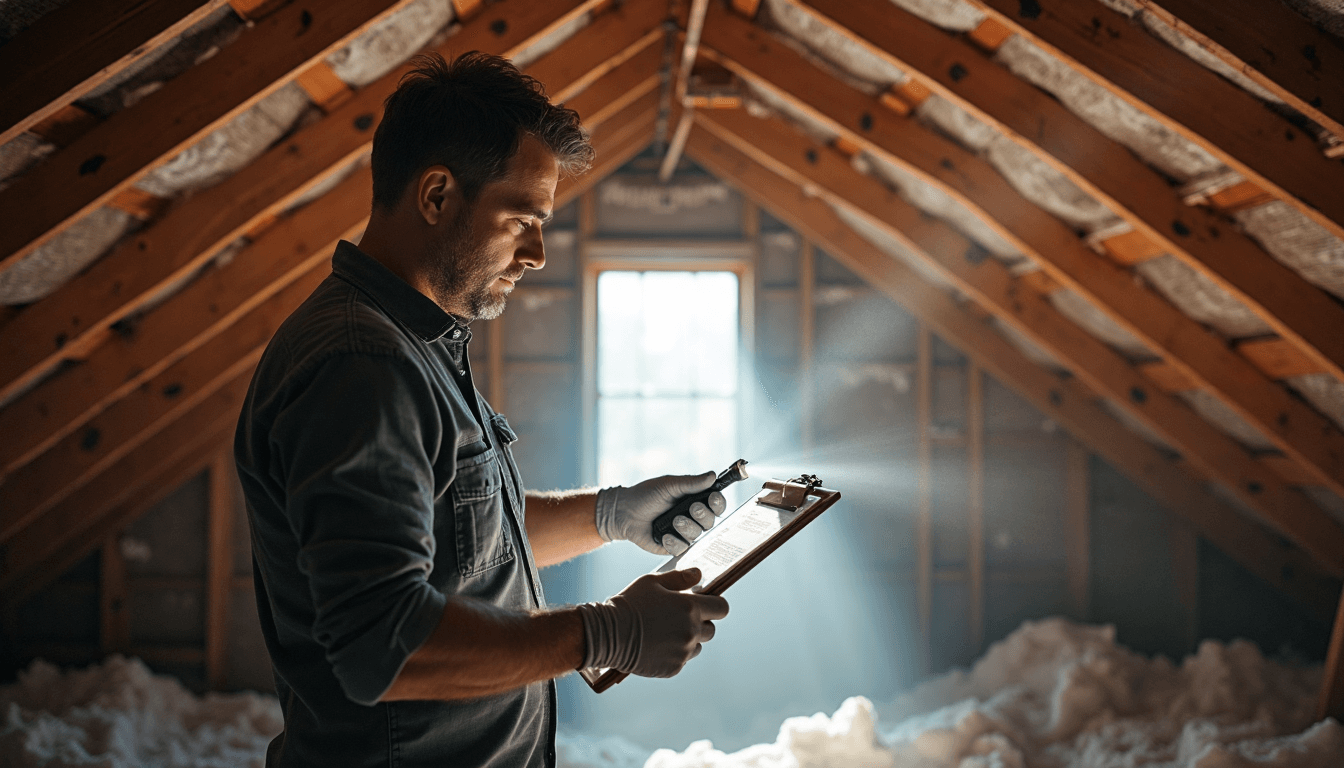
Interior Inspection and Warning Signs
A comprehensive roof inspection extends beyond the exterior. Interior signs can reveal critical roof damage:
Attic and Ceiling Indicators
- Look for water stains on ceiling or walls
- Check for daylight penetrating through roof boards
- Inspect attic for signs of moisture, mold, or wood rot
- Assess insulation condition and potential heat loss areas
While DIY inspections are valuable, they cannot replace professional expertise. Complex roof systems or significant damage require expert assessment. Montana’s extreme weather conditions make regular, thorough inspections crucial for maintaining your home’s structural integrity and preventing expensive future repairs.
Remember: When in doubt, consult a professional roofing specialist who understands Montana’s unique environmental challenges.
Common Roof Problems And What to Do Next
Roof problems can emerge unexpectedly, turning from minor issues into significant structural challenges if left unaddressed. The Environmental Protection Agency recommends proactive identification and swift action to prevent extensive damage.
Signs of Structural Roof Deterioration
Recognizing early warning signs is crucial for maintaining your roof’s integrity. According to the U.S. General Services Administration , homeowners should watch for specific indicators of potential roof problems:
Visible External Damage Indicators
- Curling or buckling shingles
- Missing or damaged roofing materials
- Granule loss on asphalt shingles
- Exposed or loose roof decking
- Visible sagging or uneven roof surfaces
These external signs often signal underlying structural issues that require immediate professional assessment. Montana’s harsh weather conditions can accelerate roof material degradation, making regular monitoring essential.
To help you quickly identify common external and internal warning signs, here’s a summary table categorizing typical roof damage indicators and what they may mean for your home.
| Sign/Indicator | Location | What It Could Mean |
|---|---|---|
| Curling/Buckling Shingles | Exterior | Age, weather exposure, poor ventilation |
| Missing/Damaged Roofing Materials | Exterior | Wind/storm damage, improper installation |
| Granule Loss (Asphalt Shingles) | Exterior | Roof aging, weather wear |
| Exposed/Loose Roof Decking | Exterior | Structural compromise, water damage |
| Sagging/Uneven Roof Surfaces | Exterior | Serious structural weakness |
| Water Stains on Ceiling/Walls | Interior | Leaks from roof, water infiltration |
| Visible Mold/Mildew | Interior | Prolonged moisture, possible leaks |
| Musty Odors | Interior | Moisture in attic or walls |
Interior Warning Signals
Roof problems frequently manifest inside your home before becoming visibly apparent externally. The Missouri Extension highlights critical interior indicators that suggest potential roof damage:
Interior Moisture and Damage Signs
- Water stains on ceiling or walls
- Unexplained musty odors in attic spaces
- Visible mold or mildew growth
- Peeling paint or wallpaper
- Soft or discolored ceiling materials
These interior signals often indicate water infiltration, which can compromise your home’s structural integrity and create potential health risks from mold development.
Immediate Response and Professional Intervention
When roof problems are detected, homeowners must take strategic actions:
Recommended Response Steps
- Document all visible damage with photographs
- Temporarily cover damaged areas with waterproof tarping
- Contact a professional roofing specialist for comprehensive evaluation
- Do not attempt extensive repairs without professional guidance
- Understand that minor issues can quickly escalate in Montana’s challenging climate
Professional roof repair specialists in Montana can provide detailed assessments, identifying root causes and recommending appropriate interventions. Given Montana’s extreme weather conditions, expert evaluation becomes crucial in preventing long-term structural damage.
Remember: Proactive maintenance and timely professional intervention can save significant money and prevent extensive home damage. When in doubt, always consult a qualified roofing professional who understands Montana’s unique environmental challenges.
When to Call a Roofing Professional in Helena
Navigating roof maintenance in Helena requires understanding when DIY efforts fall short and professional intervention becomes essential. Union Roofing recommends comprehensive professional evaluations at least twice annually to protect your home’s structural integrity.
Critical Damage Scenarios
Certain roof conditions demand immediate professional attention. According to Brix Systems , homeowners should contact a roofing professional when encountering these urgent situations:
Immediate Professional Intervention Required
- Extensive water leakage causing interior damage
- Visible roof sagging or structural deformation
- Significant storm damage from hail or high winds
- Large sections of missing or severely damaged shingles
- Persistent moisture issues in attic spaces
Montana’s extreme weather conditions can rapidly accelerate roof deterioration, making timely professional assessment crucial for preventing extensive property damage.
Insurance and Technical Complexity
Rodd Roofing emphasizes that licensed professionals provide critical advantages beyond basic repair work:
Professional Expertise Benefits
- Comprehensive damage assessment and documentation
- Specialized knowledge of Montana building codes
- Proper insurance and liability coverage
- Advanced diagnostic tools and techniques
- Manufacturer-specific warranty preservation
Complex roofing issues often involve intricate technical challenges that require specialized training and equipment. Helena’s unique climate demands nuanced understanding of local environmental impacts on roofing systems.
Cost-Effective Long-Term Solutions
While professional roof services in Helena MT represent an investment, they ultimately protect your property’s value and prevent exponentially more expensive future repairs. Experienced roofing professionals in Helena can:
Strategic Roofing Interventions
- Identify potential issues before they become major problems
- Recommend materials suited to Montana’s climate
- Provide energy-efficient roofing solutions
- Ensure proper installation and maintenance techniques
- Deliver comprehensive warranties on workmanship
Homeowners should view professional roof services not as an expense, but as a critical investment in their property’s longevity and structural integrity. By partnering with qualified local experts, you safeguard your home against Montana’s challenging environmental conditions.
Remember: Proactive professional assessment is always more cost-effective than reactive emergency repairs. Choose a reputable Helena roofing specialist who understands the unique challenges of Montana’s demanding climate.
Frequently Asked Questions
What are the signs that I need a roof inspection in Montana?
Look for curling or buckling shingles, water stains on ceilings, and signs of mold or mildew inside your home. These indicators suggest potential roof damage and should prompt an inspection.
How often should I conduct a roof inspection in Montana?
It’s recommended to conduct roof inspections at least twice a year, ideally before and after the harsh winter season, to ensure that any issues are identified early before they escalate.
What equipment do I need for a DIY roof inspection?
You will need a sturdy ladder, non-slip shoes, a safety harness, tape measure, binoculars for distant inspection, and a notebook or camera to document your findings during the roof assessment.
When should I call a professional roofing service in Helena?
Contact a professional if you notice extensive water leakage, visible sagging, significant storm damage, or large areas of missing shingles. These situations require expert evaluation and intervention to prevent further damage.
Secure Your Roof Against Montana Weather With Trusted Local Experts
Montana’s unpredictable seasons put your roof to the test. After following the DIY inspection tips from our guide, you may have discovered shingle curling, water stains, or signs that your roof just isn’t standing up to the snow and wind like it should. Ignoring these subtle warning signs can turn small issues into emergency repairs. Your safety and investment deserve more than guesswork or waiting until water starts dripping into your home. For true peace of mind, bring in Helena’s own specialists to address the damage you have spotted.
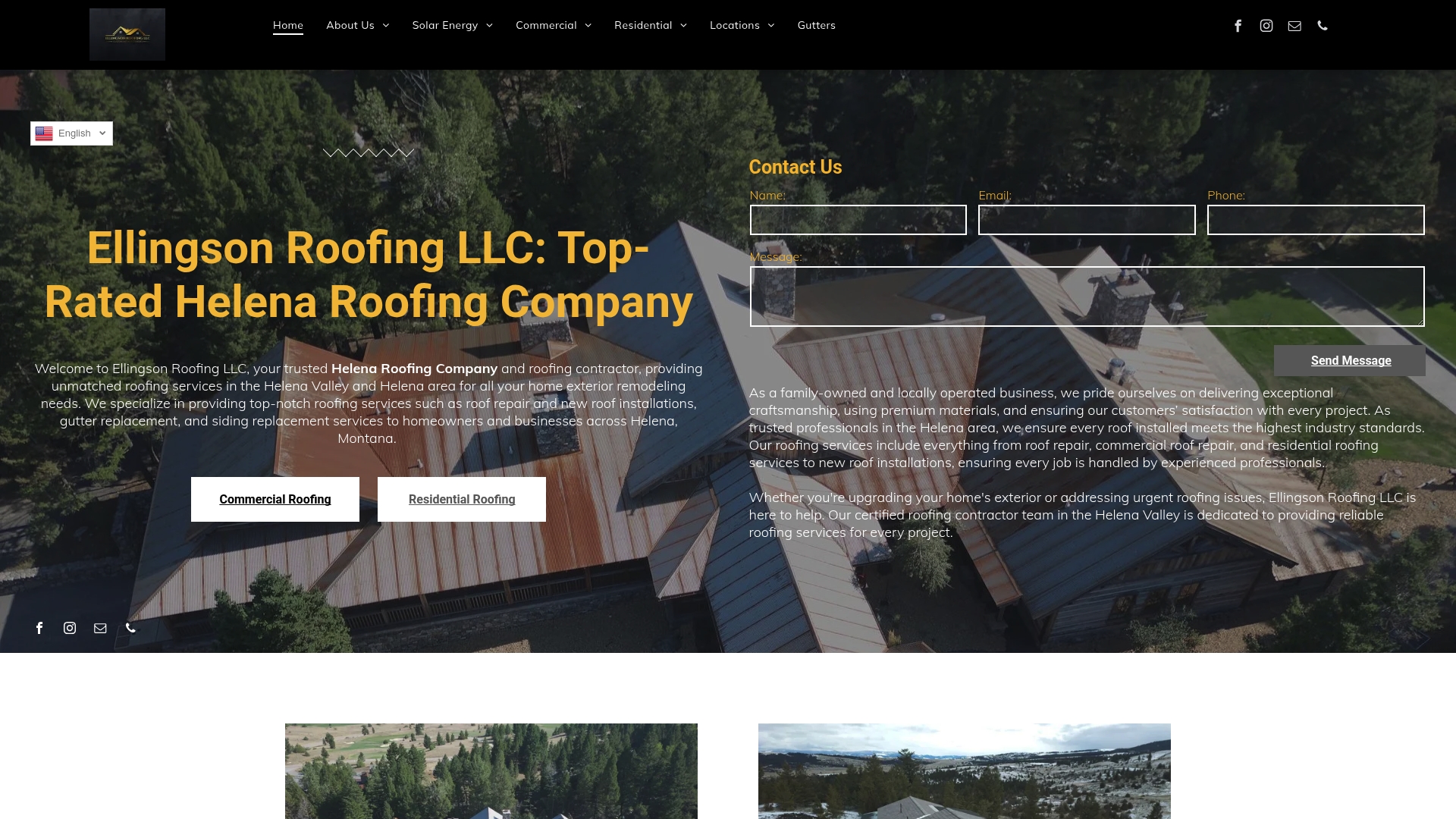
With Ellingson Roofing LLC, you get honest advice and proven solutions from a team that understands Montana’s extremes. We deliver fast response for repairs, full roof replacements, and storm damage assessments. Our experts use only the materials that stand up to harsh winters and blazing summers. Act before the next big snow or hail storm hits. Visit Ellingson Roofing LLC to schedule your free estimate or learn more about our complete roofing and exterior services. Take charge now to protect your home for the seasons ahead.

